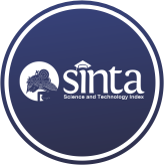E-Commerce Customer Churn Prediction Using Machine Learning Approaches
(1) Bina Nusantara University, Jakarta, Indonesia
(2) Bina Nusantara University, Jakarta, Indonesia
(*) Corresponding Author
Abstract
Full Text:
PDFReferences
A. Thakur, “Trends and Analysis of E-Commerce Market: A Global Perspective”, International Journal of Applied Marketing and Management vol. 6, (2021), pp. 11–22.
P. Mathai, "Customer Churn Prediction:A Survey", International Journal of Advanced Research in Computer Science, (2020).
A. Amin, A. Adnan, and S. Anwar, “An adaptive learning approach for customer churn prediction in the telecommunication industry using evolutionary computation and Naïve Bayes”, Applied Soft Computing, vol. 137, (2023), p. 110103.
A. K. Ahmad, A. Jafar, and K. Aljoumaa, ‘Customer churn prediction in telecom using machine learning in big data platform’, Journal of Big Data, vol. 6, no. 1, (2019), p. 28.
M. K. Mithal, "Customer Churn Analysis in Telecom Using Machine Learning Techniques", Masters thesis, School of Computing, National College of Ireland, Dublin, Ireland, (2023).
A. Lubis, S. Prayudani, J. Polmed, O. Nugroho, Y. Lase, and M. Lubis, "Comparison of Model in Predicting Customer Churn Based on Users' habits on E-Commerce",5th International Seminar on Research of Information Technology and Intelligent Systems (ISRITI), (2022), pp. 300–305.
H. Prakosa and N. Rokhman, ‘Anomaly Detection in Hospital Claims Using K-Means and Linear Regression’, IJCCS (Indonesian Journal of Computing and Cybernetics Systems), vol. 15, no. 4, (2021), pp. 391–402.
H. Wu, S. Yang, Z. Huang, J. He, and X. Wang, "Type 2 diabetes mellitus prediction model based on data mining", Informatics in Medicine Unlocked, vol. 10, (2018), pp. 100–107.
S. Sugidamayatno and D. Lelono, ‘Outlier Detection Credit Card Transactions Using Local Outlier Factor Algorithm (LOF)’, IJCCS (Indonesian Journal of Computing and Cybernetics Systems), vol. 13, no. 4, (2019), pp. 409–420.
M. Alirezaei, S. Niaki, and A. Niaki, "A bi-objective hybrid optimization algorithm to reduce noise and data dimension in diabetes diagnosis using support vector machines", Expert Systems with Applications, (2019).
DOI: https://doi.org/10.30645/kesatria.v5i4.482
DOI (PDF): https://doi.org/10.30645/kesatria.v5i4.482.g477
Refbacks
- There are currently no refbacks.
Published Papers Indexed/Abstracted By:














